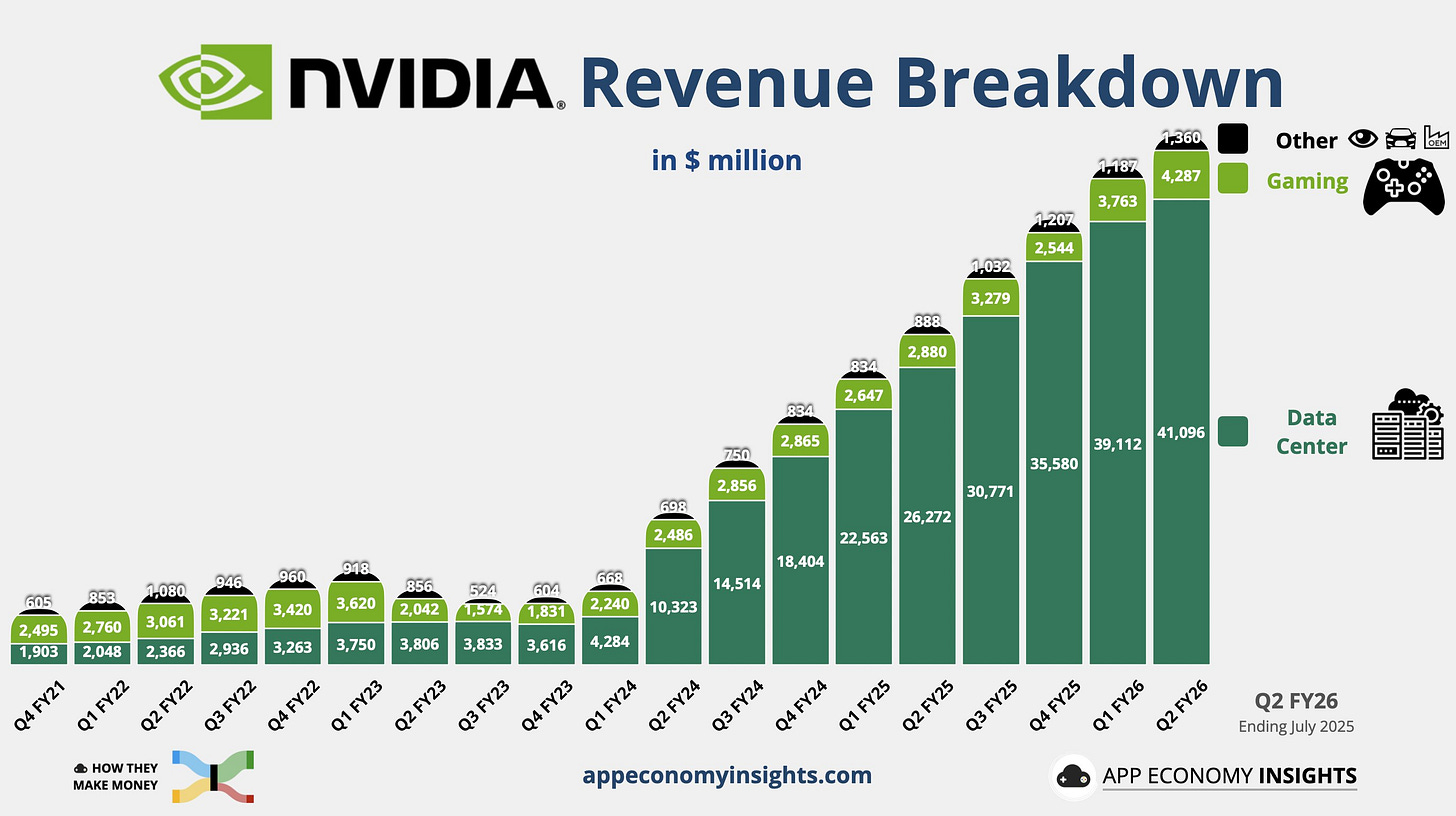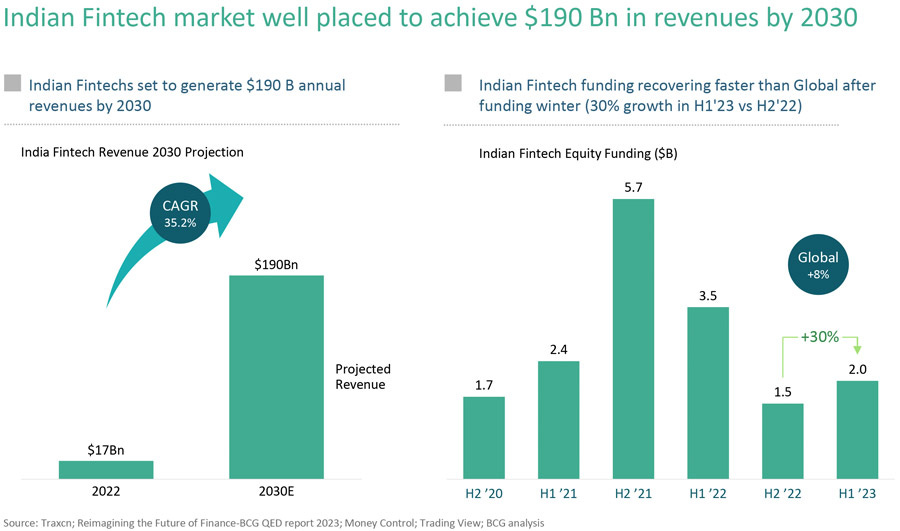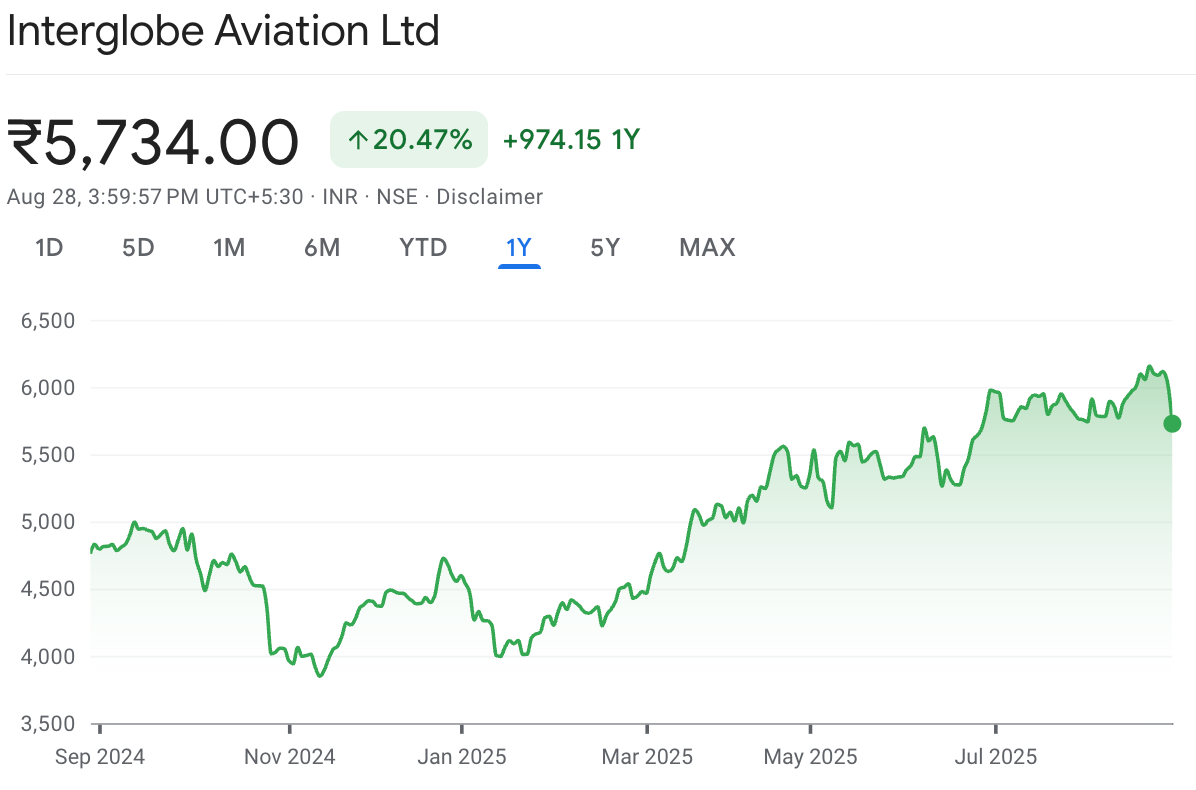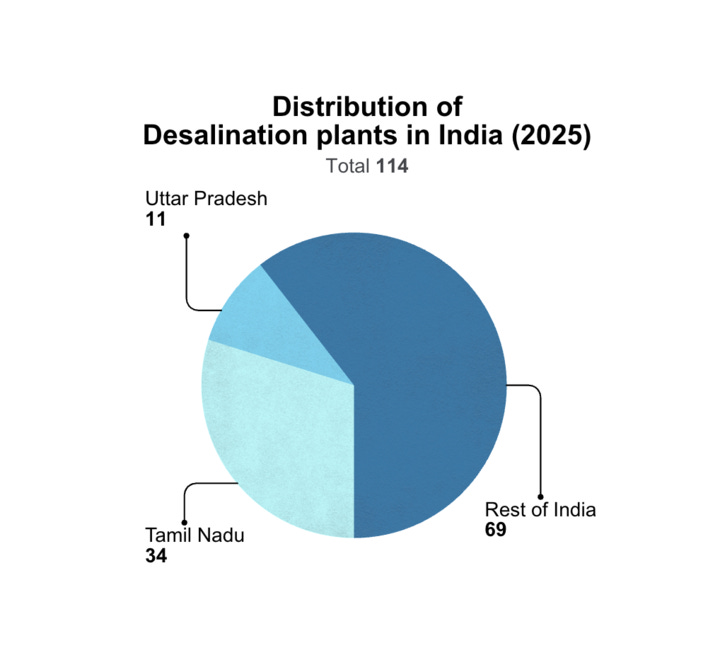Industrial production steady, Nvidia crushes earnings, and first biofuel IPO.
🗓 Morning, folks!
Dalal Street extended its losing streak for a second straight session on Thursday as the 50% tariff levy on US exports rattled sentiment on Wednesday.
The Nifty slipped to a fresh 3-month low, ending down nearly 1%. The biggest drag came from the banking pack, with Nifty Bank tumbling below the 54,000 mark for the first time since May 9.
💡 Spotlight: India’s factory output got a boost in July. Industrial Production (IIP) rose 3.5%, more than double June’s 1.5%.
Manufacturing did the heavy lifting, growing 5.4% vs 3.7% in June. Infra goods were the star, nearly doubling growth to 11.9% from 6.7%.
Consumer demand looked stronger too, up 7.7% in July after just 2.8% in June, showing people are spending more on non-essentials.
But not all sectors joined in: mining stayed in the red (-7.2%), electricity barely grew (+0.6%), and primary goods fell (-1.7%).
Bottom line: July showed signs of momentum, but the recovery is still patchy.
1 Big Thing: India turns US tariff issue into global export push 📈
With the US having imposed steep tariffs on Indian exports, the Commerce Ministry is working on a fresh strategy that puts textiles and gems & jewellery at the centre of its global push.
What’s going on: both sectors are heavily exposed to the US and form a large chunk of India’s export basket. To mitigate risks, the government plans a major outreach drive in 40 countries, including the UK, Japan, South Korea, Germany, France, Italy, Spain, the Netherlands, and emerging markets like Mexico, Poland, Russia, and Turkiye.
The idea is to position India as a reliable supplier of sustainable, high-quality, and innovative textile and jewellery products, backed by Export Promotion Councils (EPCs) and Indian missions abroad.
The US will remain an important market, but the tariff shock has underlined the need to diversify. By opening new markets and product lines, India hopes to shield its exporters from sudden global disruptions and strengthen its role in global value chains. Industry body FICCI has welcomed the move, noting it comes at a time when global trade is facing headwinds.
Zoom out: India already exports to more than 220 countries, but officials say the real prize lies in 40 select markets that together import $590 billion worth of textiles and apparel annually. India’s current share is only around 5-6%. Even a small bump in that number could translate into billions of dollars in new export opportunities.
2. Nvidia crushes earnings as AI demand stays hot 💰
Nvidia just served another blowout quarter, the kind that screams “AI boom isn’t done yet.” Sales and profits smashed expectations, and the company says next quarter will grow more than 50%.
By the numbers:
- Revenue: $46.74B, beating estimates of $46.06B and up 56% YoY.
- Net income: $26.42B, a 59% jump from $16.6B last year.
- EPS: $1.05 adjusted vs. $1.01 expected.
- Data centers: $41.1B in sales, up 56% YoY, still the backbone of the business.
- Gaming: $4.3B, up 49% YoY as demand for GPUs stays hot.
- Robotics: $586M, up 69% but still a tiny slice of the pie.
- Blackwell chips: sales rose 17% QoQ, now making up ~70% of the data center haul.
How the quarter went: the company’s data center business is still the money printer, making up nearly 90% of revenue. The new Blackwell chips are flying off shelves, while gaming had its strongest showing in years.
But the China headache hasn’t gone away as Nvidia sold zero H20 chips to the mainland this quarter thanks to export rules. That cost the company an $8 billion sales opportunity and a $4.5 billion writedown, though it did squeeze $180 million worth of H20 inventory into non-China orders.
Zoom out: this was Nvidia’s ninth straight quarter of 50%+ revenue growth, fueled by hyperscalers like Microsoft, Amazon, Meta, and Alphabet pouring billions into AI infrastructure.

3. TransBnk pockets $25 million to boost corporate banking 💰
TransBnk raised $25 million in Series B funding led by Bessemer Venture Partners.
What are they solving: retail banking went digital years ago, but corporate banking still lags with scattered accounts, clunky portals and endless spreadsheets. TransBnk is fixing that.
Built into the bank’s core systems, it gives companies one unified, programmable dashboard to manage, transact and reconcile across all relationships. It’s the seamless, mobile-first experience businesses should have had long ago.
Zoom out: globally, firms like Finastra, Temenos, and Infosys’ Finacle are driving banking modernisation through software platforms. In the U.S., players like Treasury Prime offer embedded banking for enterprises. But in India, startups in this space remain rare, giving TransBnk a clear first-mover edge.
Corporate banking in India is still largely underserved, creating a $20 billion fintech opportunity by 2030. While the country already has 26 fintech unicorns worth $90 billion, most focus on payments and lending. Very few are innovating in core banking infrastructure, leaving significant untapped potential.

4. RVNL and Texmaco join hands to propel Indian railways 🚂
Rail Vikas Nigam Limited and Texmaco Rail & Engineering have announced a joint venture to bolster India’s railway capabilities and export competitiveness.
Texmaco Rail & Engineering, is a Kolkata-based company that provides freight to Indian railways and international clients. While RVNL - a Navratna public sector enterprise implements railway infrastructure projects.
The deets: the two companies will form a joint venture for production of railway wagons, locomotives, and coaches, trainsets, and metro coaches. Texmaco will hold a 49% stake while RVNL will have a 51% stake.
Big picture: the joint venture is aimed at combining RVNL’s execution prowess and Texmaco’s production capabilities to deliver high quality offerings through sustainable methods. It perfectly aligns with the government's ambition of achieving net-zero emissions by 2070. The sector is slated to grow at a CAGR of 3.6% and reach a valuation of $15.9 billion by 2030.
5. TruAlt Bioenergy gears up for ₹1000 crore IPO 🌱
TruAlt Bioenergy is gearing up for its much-awaited public debut, and aims to raise ₹1,000 crore via an IPO.
TruAlt is among India’s largest biofuel producers, with a primary focus on ethanol, and is regarded as the country’s biggest ethanol producer by installed capacity.
What’s brewing: TruAlt had already bagged SEBI’s nod back in November 2024, but choppy market conditions and tariff uncertainties forced it to hit pause.
At ₹1,000 crore, TruAlt’s issue will be among the largest biofuel listings in India, signaling the sector’s arrival as a mainstream investment theme.
The big picture: India’s biofuel sector is gaining momentum with IPOs hitting the market. TruAlt Bioenergy plans a ₹1,000 crore issue, while Shubhshree Biofuels’ SME IPO saw strong demand. These listings reflect growing investor appetite as India pushes renewable energy, creating opportunities for biofuel startups in the public markets.
6. Stocks that kept us interested 🚀
1. IndiGo falls after Gangwal Family offloads over 2% stake 🛫
Shares of Interglobe Aviation, parent company of India’s largest airline IndiGo, fell as much as 5% after a large deal took place.
The deets: as many as 2.35% of the total equity or 91 lakh shares of Interglobe Aviation changed hands through a block deal. The shares changed hands at an average price of ₹5,838 per share, which takes the total transaction value to ₹5,135.5 crore.
A block deal is a way for big investors to buy or sell a large number of shares in one go, without disturbing the regular market too much.
This marks another step in the Gangwal family’s steady exit from IndiGo. Since Rakesh Gangwal stepped down from the airline’s board in February 2022, the family has been gradually trimming its stake. In 2025 alone, they have already sold nearly 9% of their holdings.
Background: due to a fallout between Gangwal and co-founder Rahul Bhatia over governance issues, Gangwal announced plans to fully exit within five years. In August 2024, the family trust sold a 5.2% stake for ₹9,549 crore. With this latest block deal, Gangwal Group is left with a 4.78% stake in the airline, valued at about ₹11,169 crore.

2. Vishnusurya Projects jumps on ₹2,217 cr order win 🚀
Shares of Vishnusurya Projects & Infra surged over 16% on Thursday after the firm bagged a ₹2,217 crore contract in Tamil Nadu to build a seawater desalination plant.
What’s happening: the facility will treat 60 million litres of seawater every day.
The deets: the stock went wild on the news, trading volumes jumped to 74 times its usual average. But here’s the catch. The share is still down 23% this year, showing how volatile it’s been. Vishnusurya usually works on mining and EPC projects like water, transport, and rail, and it’s been slowly beefing up its order book. Just last month, it won a ₹103 crore water project in Chennai.
Zoom out: desalination is gaining traction in water-stressed states like Tamil Nadu, which already hosts multiple large plants to meet rising industrial and urban demand. For mid-sized infra firms like Vishnusurya, such marquee projects boost visibility and credibility in a competitive EPC market.

What else are we snackin’ 🍿
🚀 Incentive ride: Ola Electric shares zoomed after securing PLI certification for its Gen 3 scooters, making it eligible for 13-18% incentives until 2028.
🌍 Payment boost: Infosys & Mastercard partnered to integrate Finacle with Mastercard Move, enabling faster cross-border payments across 200 countries.
That’s a wrap! Don’t let the weekday blues get to you.
And if you’d like to place your brand on this newsletter, let us know.
Hit that 💚 if you liked this issue.



